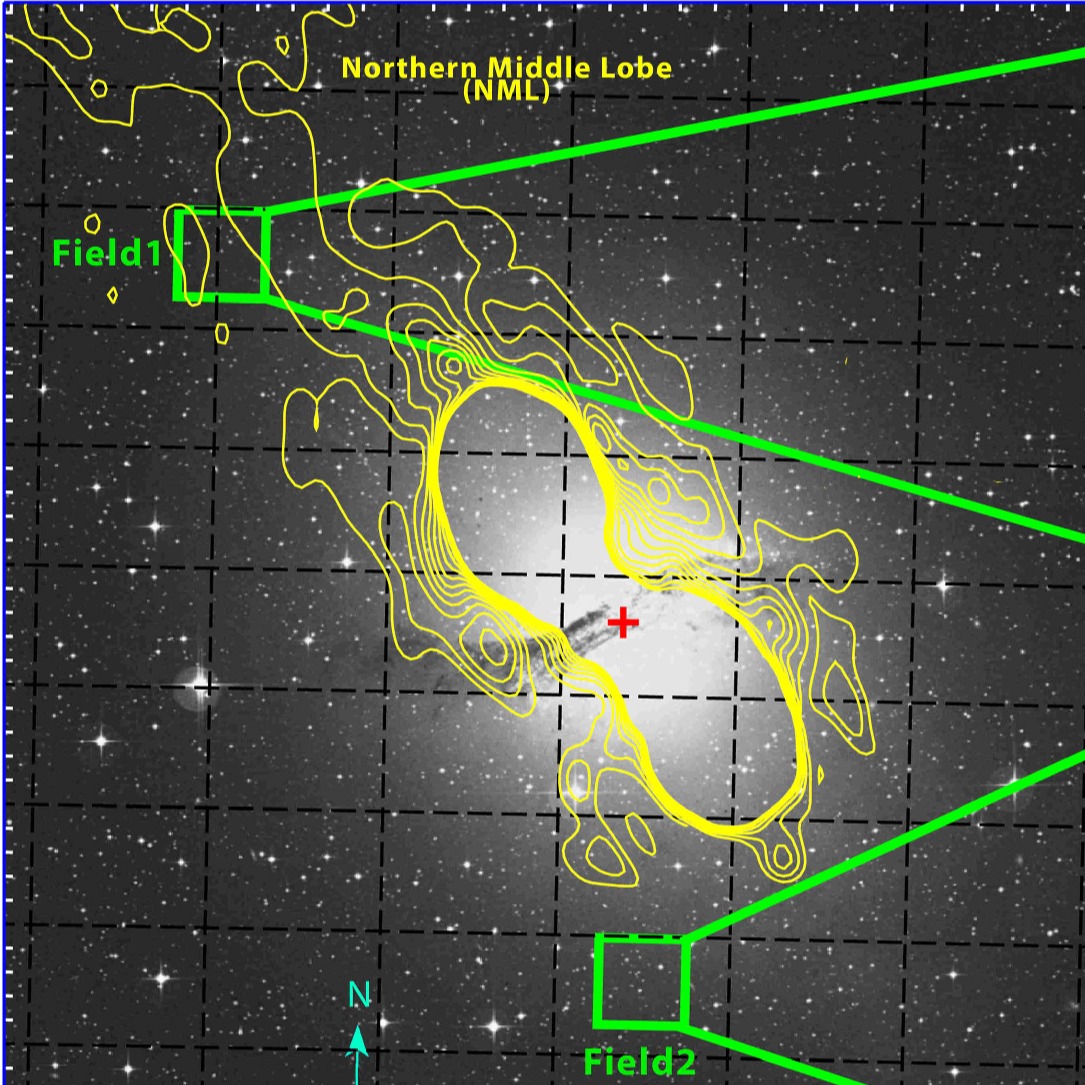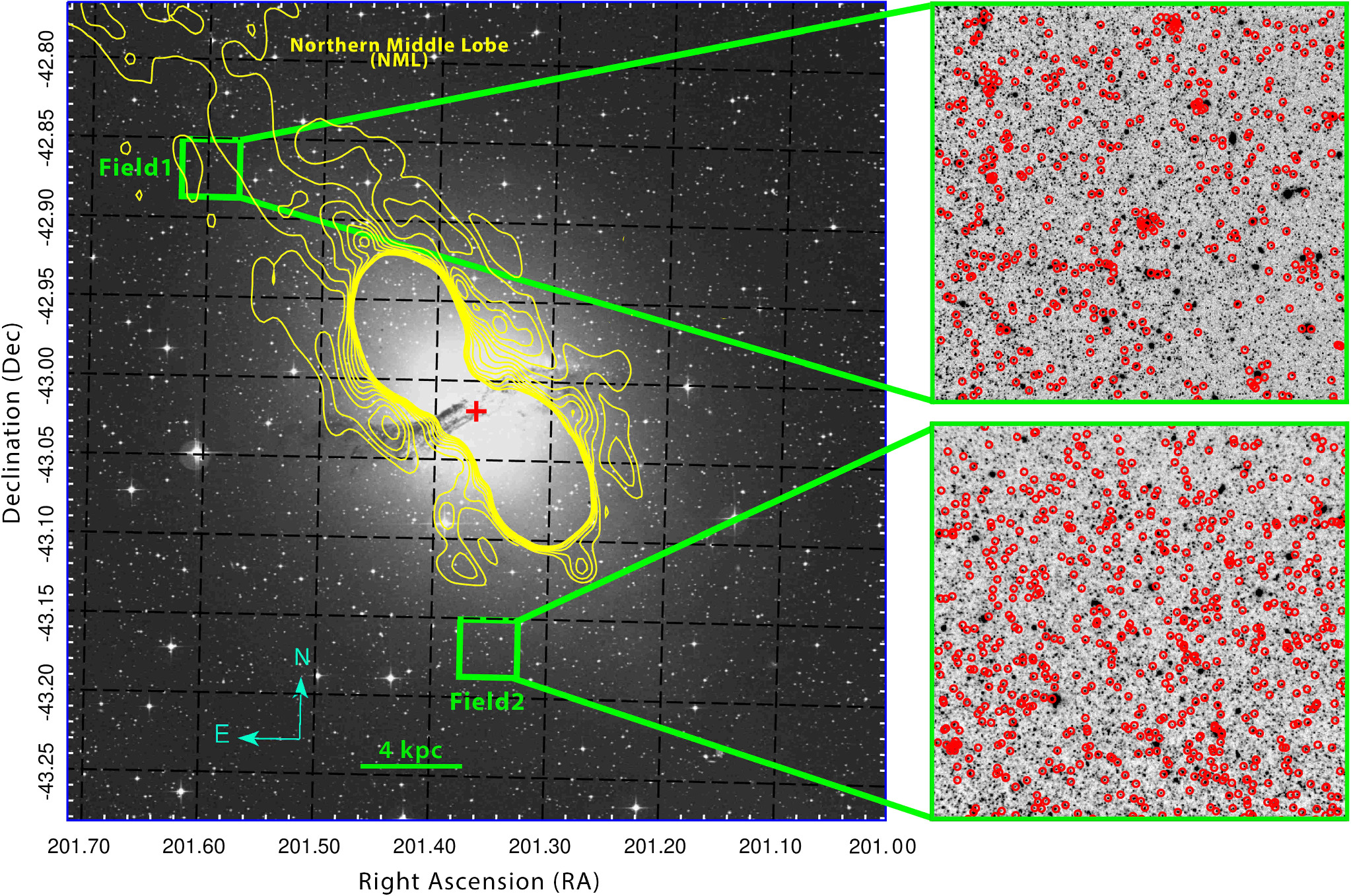
The star formation history is a crucial component of galaxy formation and evolution. Recovering the SFH in resolved galaxies is typically based on the color-magnitude diagrams of individual stars where the signature of different stellar populations can be traced. This type of analysis is confined to a few dozen galaxies that mostly lie within our local Group because of the limited spatial resolution. The goal of our study was to investigate the star formation history in two small fields within the halo of the galaxy NGC 5128. This galaxy is the closest giant elliptical galaxy to us with a distance of 3.8 Mpc. To explore the relationship between the halo's star formation history and, consequently, the murger history of this galaxy, we studied long period variable stars. Long period variable stars are stars with a wide age range, from about 10 million to 10 billion years. These stars are considered good tracers of stellar populations due to their high luminosity and low temperature (2500 to 4500 Kelvin). Most of them are stars that vary on time scales of 100 to 1300 days and are easily identifiable. We examined 395 long period variables in one field and 671 long period variables in another field. Although the two fields are 28 kiloparsecs apart and located on different sides of the galaxy, they show similar star formation histories. In both fields, an increase in star formation is observed at 3.8 billion and 800 million years ago. We postulate that the enhanced SFR around t ∼ 800 Myr ago may have been the result of triggered star formation by a merger that happened t ∼ 1 Gyr ago.

Archival optical image (at 468 nm wavelength) of NGC 5128 taken with the UK Schmidt Telescope overlain with the location of the fields studied here. The red cross indicates the center of NGC 5128. Red circles represent the locations of the selected LPV stars from the ISAAC Ks-band data.
Back to the main page